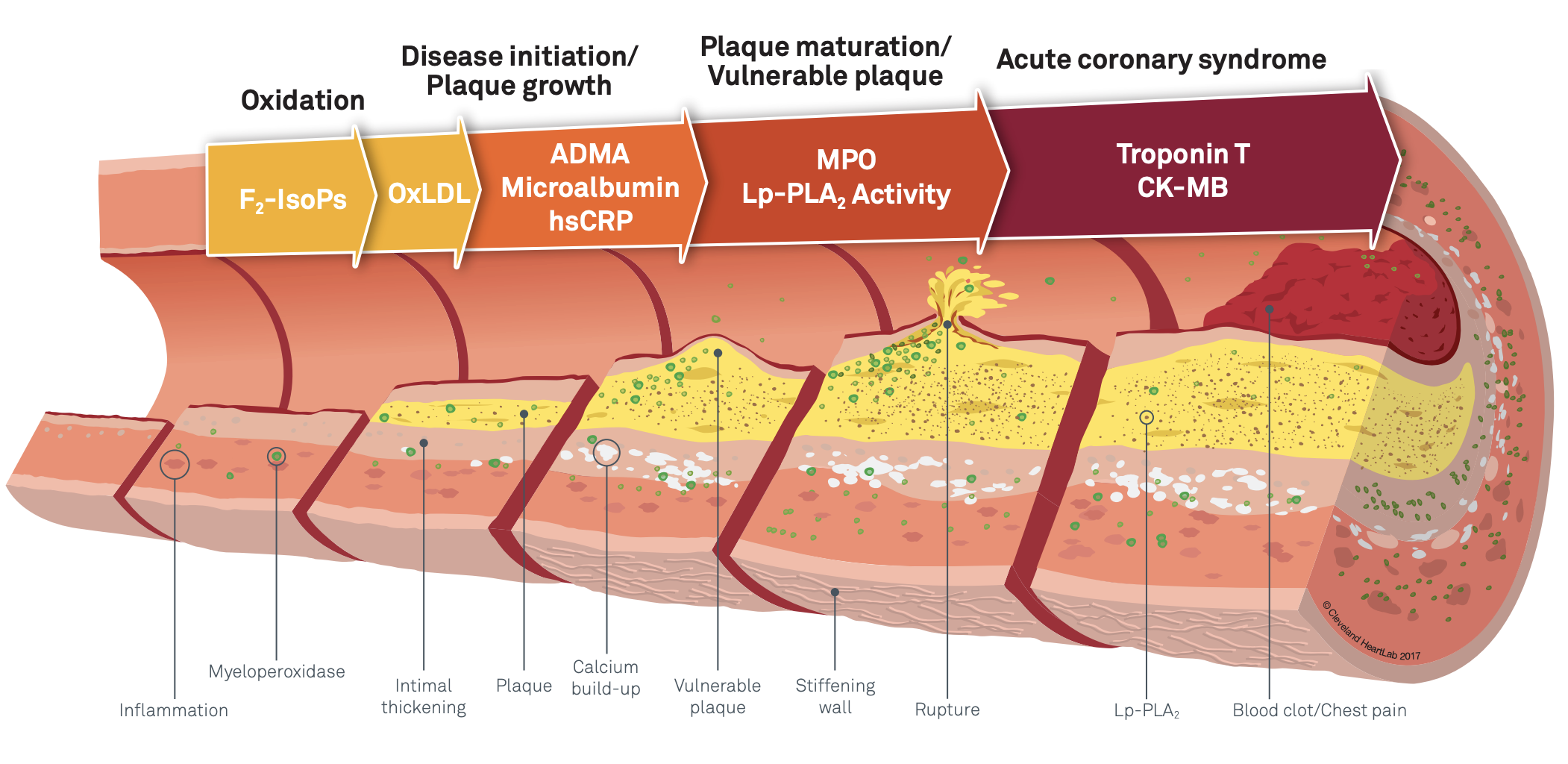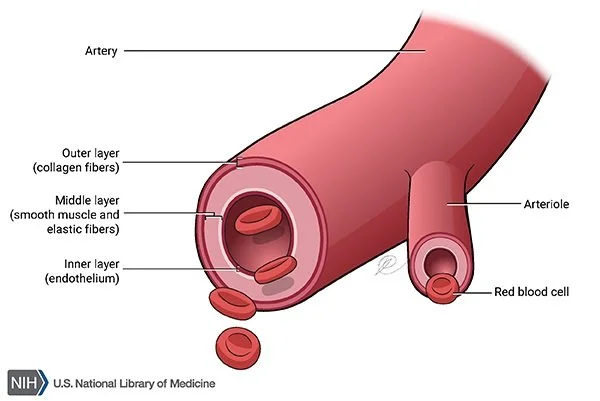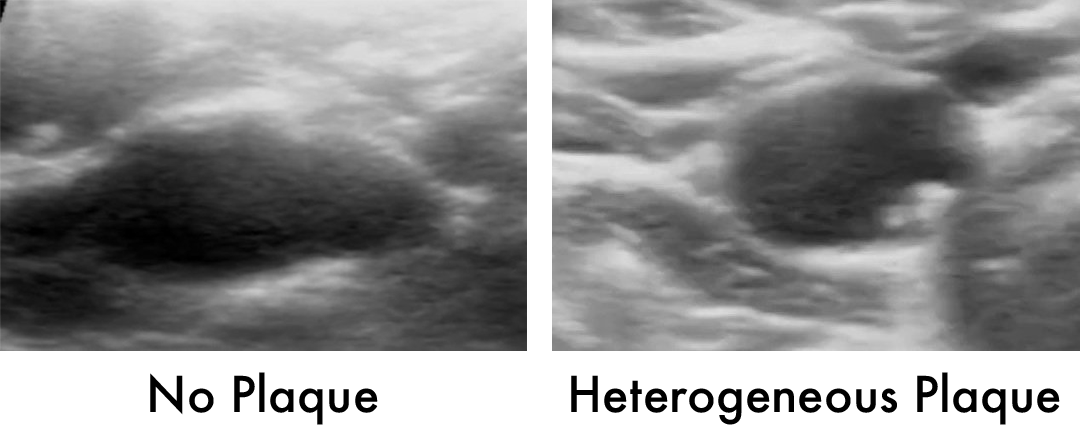CUREFAQs: Frequently Asked Questions
Answers to commonly asked arterial and metabolic disease questions.
Categories
Click on one of the categories below or type a keyword into the search bar to get started.
Recent FAQs
Do your genes make you more susceptible to heart attack?
Genetics play a significant role in whether you will have a heart attack or stroke. Although we cannot yet alter our genes, we can “hack” them. Some genetic information can determine optimal treatment choices for you that may or may not be right for others…
Genetics play a significant role in whether you will have a heart attack or stroke. However, though we cannot yet alter our genes, we can “hack” them. Some genetic information can determine optimal treatment choices for you that may or may not be right for others, even those in the same family.
Lifestyle choices and environmental exposure can change the way our genes are expressed (how the body uses information in our genes to create proteins and other molecules). This concept is called epigenetics.
Our genes are a blueprint for our bodies, but epigenetic changes can influence which genes are turned on or off. These changes can be passed down from one generation to the next, and can also be affected by our diet, exposure to toxins, and other factors. Studying epigenetics can help us understand how these changes occur, and how they may contribute to the development of diseases such as cancer and heart disease.
Genetic testing is becoming more affordable. Since it only needs to be done once, it can actually be quite cost-effective even if insurance plans don’t cover the costs.
What types of genes are analyzed during genetic testing at The CureCenter for Chronic Disease?
Here are some, but not all, genes that are analyzed during genetic testing that may indicate risk of heart attack:
Haptoglobin Genotype:
Haptoglobin genotype 1-1
Lowest risk for vascular disease events
Vitamin E increases risk of vascular events
Haptoglobin genotype 1-2
Increases your risk by 200%
Vitamin E increases vascular event risk in this group as well.
Gluten increases chronic inflammation moderately. Gluten avoidance is optimal
Haptoglobin genotype 2-2
Increases risk of vascular events by 500%!
Vitamin E mixed tocopherols reduces cardiovascular risk! Now that is cool to know!
Gluten also provokes a significant increase in inflammation in the gut for this genotype. Therefore, gluten should be avoided by individuals with this genotype. Gluten avoidance is also important for those who are haptoglobin 1-2 because they are very prone to gluten triggered inflammation.
ApoE Genotype: ApoE 4 genes increases risk of Alzheimer’s Disease and arterial disease. It can predict better outcomes with a very low fat diet and no alcohol. If you are willing to modify these choices based on the result, let’s get it. Howver, if other dietary priorities, like reducing carbs due to insulin resistance, are a priority, maybe it won’t matter. ApoE 2 or 3 genes are lower risk for arterial disease and dementia, and generally do well with a low carbohydrate diet with more liberal fat.
KIF-6 Genotype: KIF-6 genotype determines whether atorvastatin and pravastatin are effective or ineffective at reducing heart attack and stroke frequency. However, if we use rosuvastatin or lovastatin as our preferred statin, it doesn’t matter. Again, it is useful in a limited set of circumstances.
9p21 Genotype is the Heart Attack Gene. It is the one to beat, as the title of Dr. Bale and Dr. Doneen’s book suggests. However, there is no specific treatment for this gene. Its presence could motivate someone sitting on the fence about some treatments, but for the most part, we rarely order it since our program is based upon measurable disease, not risk.
Awareness of higher risk can provoke more proactive efforts on controllable factors. However, if you already have a disease, being “low risk” doesn’t change your plan. You need to act on the disease to put it into remission.
There are other genes that determine how you metabolize medications. This can be important if you are on multiple medications that can interact with one another or require metabolism for elimination or activation. When inquiring about genetic testing, ask your doctor about these genes. Be wary of commercial panels of an array of genetic tests that can add more “noise” than “signal.” 23 and Me offers little useful information for testing that really matters.
Knowing your genetics allows The CureCenter to individualize and personalize your care to lower your risk of having a heart attack or stroke. We offer genetic testing for all and encourage it especially for those who have had a heart attack, stroke, TIA, stent, bypass or signs of dementia to optimize treatment. For others, it enables the best possible choices to personalize your care.
Our general rule is to order genetic tests that will determine a specific change in choices or prescriptions.
For recommendations on genetic testing, request your complimentary Discovery Call with Dr. Backs and take the first step toward ensuring a long and healthy life.
Stroke or heart attack: What really happens?
There are three phases of arterial disease that cause a heart attack: (1) Normal Artery, (2) Stable (Fibrous) Plaque, (3) Vulnerable/Unstable Plaque…
This video will change your understanding of stroke and heart attack events. They happen in a suddenly accelerated phase of a chronic progressive inflammatory process. Similar to acne, inflammation creates plaque (pimple) that can heal (calcification/scar) or rupture/crack. Plaque doesn’t “break off.” It is the clot/thrombus that interrupts blood flow leading to stroke or heart attack. Watch this video.
There are three phases of arterial health depicted in the video featured in this message:
Normal Artery
Vulnerable/Unstable Homogeneous Plaque
Stable (Fibrous) Heterogeneous Plaque
Healed Calcified Plaque
A normal artery refers to the stage before atherosclerotic plaque forms in the artery wall. This stage is typical of younger individuals. Atherosclerosis is more common with age, but it is not normal “aging.”
Stable calcified plaque is like a scar that forms after an injury. It is the latest and most stable stage of the process. It won’t disappear altogether, but it also won’t cause sudden harm. Calcified and fibrotic connective tissue wall off the plaque from the lumen of the artery where the blood flows. This is like a healed scar from a prior injury, an event that could have but did not happen. The lumen through which blood flows is diminished in size, but the situation is stable. However, it reveals increased risk of forming more plaque in the future because it has done so in the past, especially if the root causes are still active.
Vulnerable/unstable homogeneous new plaque is the real danger. It is actually newly-formed plaque. When plaque forms due to inflammation or injury to the artery wall, there are two potential outcomes: (1) it can heal without causing harm, becoming stable plaque, or (2) it can rupture or erode and trigger formation of a blood clot in the lumen. This blocks blood flow through the artery. That flow interruption kills heart muscle or brain tissue.
Arterial disease is silent, deadly, progressive but preventable and reversible. At the CureCenter, we work with our patients to prevent the formation of new plaque and heal plaque that has already formed. We identify and minimize the common and uncommon root causes with a Personalized CurePlan based on better choices, targeted supplements, safe and effective medications and genetic tests that determine individualized therapy.
Are your arteries healthy? If they are sicker and older than you believe, we can make them healthier and younger again.
Take the first step toward preventing arterial disease, heart attack, and stroke. Request a complimentary Discovery Call with the CureCenter today.
What is atherosclerosis?
Atherosclerosis is damage of the artery wall due to inflammation. Healthy arteries are important because they carry oxygen-rich blood from the heart to the entire body’s tissue and organs…
Atherosclerosis is injury and inflammation of the artery wall. Healthy arteries are important because they carry oxygen-rich blood from the heart to the entire body’s tissue and organs. A more accurate description of the most dangerous stage of disease would be “atheritis” or “arteritis” meaning inflammation of the arteries. “Sclerosis” or hardening/calcification is a more benign later healed benign stage of the disease.
Acne is a relevant analogy most of us know. Inflammation in the skin (artery wall) creates pimples/plaque (in areas where turbulence adds mechanical shearing forces) that are prone to rupture (homogeneous and heterogeneous plaque) when new. The preferred path is to heal and leave a scar. When plaque is becoming calcified, it is healing. Rising coronary calcium score is a good, not bad, trend if you are on a healing program.
Atherosclerosis is often called “hardening of the arteries” due to a buildup of calcium deposits in plaque that forms in the arteries. However, calcium presence is actually a sign of healing and increases over time with new plaque development (bad) and current plaque calcifying (good). Plaque that has little or no calcium is less stable, more prone to rupture, and more threatening.
When your artery walls thicken with plaque and narrow the lumen, blood flow to any organ can be reduced or interrupted, leading to disability (temporary or permanent) or death. Stress tests and angiograms are useful to detect this phenomenon. However, the greatest danger is sudden plaque rupture and blood clot formation, resulting in heart attack or stroke. The best test to evaluate this stage is ultrasound for the carotid arteries (affordable) and AI processed coronary artery CT (expensive).
Source: Cleveland Heart Lab
How are arteries important to your health?
The heart pumps blood into the aorta and arteries, which then branch out into smaller blood vessels, eventually delivering the oxygen and nutrients to individual cells. Without healthy arteries, the body's tissues and organs would not receive the oxygen and nutrients needed to function properly. Maintaining healthy arteries is crucial for overall health and wellbeing. Arterial health improvement is a great reflection of reduced oxidate stress, inflammation and overall health improvement.
The artery wall has three layers:
Adventitia (outer layer): composed of connective tissue that supports and protects the artery from external injury.
Media (middle layer): made of smooth muscle and elastic fibers. It is responsible for regulating the diameter of the artery, which affects blood pressure and blood flow.
Intima (inner layer): a thin layer of endothelial cells that regulate all kinds of activity, maintaining a smooth surface for blood to flow through.
Image Source: NIH U.S. National Library of Medicine
What causes plaque to develop in the arteries?
Plaque grows due to complicated interactions between genetics, high blood pressure, lipids, inflammation driven by oxidative stress and insulin resistance, diabetes, and other conditions. Arterial disease is like acne and plaque is like a pimple or pustule.
Plaque progresses as follows:
Homogeneous plaque: This fresh, soft vulnerable plaque is like a new pimple. It is the most dangerous stage of plaque evolution because it is most likely to rupture and cause a heart attack or stroke.
Heterogeneous plaque: This type of plaque is like a pimple that is healing. It can still rupture or erode because inflammation has not resolved. It is the most common stage of plaque seen on imaging of arteries. It is an uneven buildup of inflammatory material, fibrin, and calcium.
Calcified Plaque: This type of plaque is the scar that results when plaque heals. Like any scar, we carry it for the rest of our lives but it is no longer a threat. Calcified plaque is the residual scar of a rupture-related event that could have happened, but didn’t! Calcified plaque is less likely to rupture, but can still cause problems by narrowing the artery and restricting blood flow.
As plaque is developing, it is vulnerable to rupture. A clot forms in the artery lumen. If the clot blocks an artery feeding your heart, you experience a heart attack. If it blocks an artery feeding your brain, you experience a stroke. Both can result in death or disability, but they can also be prevented by making artery walls thinner/less inflamed and healthier.
Atherosclerosis and its progression is more common but not inevitable as we age. Most adults have it starting in the thirties.
Using new science, testing, and treatments, we can halt and reverse the disease in our arteries.
Take the first step to prevent heart attack and stroke. Request a complementary Discovery Call with Dr. Backs and begin your journey to prevention and a healthy, happy life.
Get Started on the Path to a Long and Healthy Life
Participate in a 15-30 minute Zoom or phone call with Dr. Backs. Your questions about process, cost, insurance coverage and expectations will be answered. You will decide together if the CureCenter and a CurePlan are right for you.
Located in Central Illinois? Schedule your 15-minute CureScreen for arterial disease. It’s quick, painless, and is the first step toward preventing the most common cause of death and disability.

















